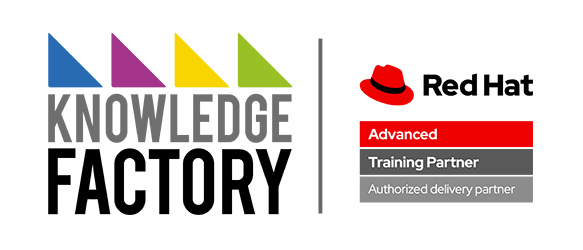Course description
Create and manage virtual machines on OpenShift using the Red Hat OpenShift Virtualization operator
Managing Virtual Machines with OpenShift Virtualization teaches the essential skills required to create and manage virtual machines (VM) on OpenShift using the Red Hat OpenShift Virtualization operator. This course does not require previous knowledge of containers and Kubernetes.
This course provides:
- Skills required to create, access, and manage VMs on OpenShift clusters
- Skills required to control usage and access of cpu, memory, storage, and networking resources from VMs using the same Kubernetes features that would also control usage and access to these resources for containers
- Sample architectures to manage High Availability (HA) of VMs using standard Kubernetes features and extensions from OpenShift Virtualization
- Strategies to connect VMs on OpenShift to data center services outside of their OpenShift cluster, such as storage and databases
- Strategies to migrate VMs from compatible hypervisors to OpenShift Virtualization by using the Migration Toolkit for Virtualization operator
Note: This course is offered as a four day in person class, a five day virtual class or is self-paced. Durations may vary based on the delivery. For full course details, scheduling, and pricing, select your location then “get started” on the right hand menu.
Course content summary
- Create VMs from installation media and disk images
- Access text and graphical consoles of a VM
- Connect to VMs using Kubernetes networking (services, ingress, and routes)
- Provision storage to VMs using Kubernetes storage (PVC, PV, and storage classes)
- Start, pause, and stop VMs
- Clone and snapshot VMs
- Create and seal golden VM images
- Connect VMs to external and extra networks (outside of the Kubernetes pod and service networks)
- Provision load balancer services for VMs and then use the services to enable SSH access to VMs
- Connect VMs to host storage and external storage
- Create VMs from predefined and custom VM Templates and InstanceTypes
- Migrate VMs from compatible hypervisors
- Back up and restore VMs by using OADP and command-line tools
Audience for this course
- Virtual Machine Administrators who want to virtualize workloads from traditional Hypervisors to OpenShift Virtualization
- Platform Engineers, Cloud Administrators, and System Administrators who want to support virtualized workloads, either independently from or in the same OpenShift cluster as containerized workloads
Prerequisites for this course
- Take our free assessment to gauge whether this offering is the best fit for your skills
- Red Hat OpenShift Administration I: Operating a Production Cluster (DO180) is recommended but not required
- Linux skills are not required to manage OpenShift clusters and OpenShift Virtualization but managing individual Linux VMs requires Linux sysadmin skills provided by:
- Red Hat System Administration I (RH124) and Red Hat System Administration II (RH134) for managing the OS inside a Linux VM.
